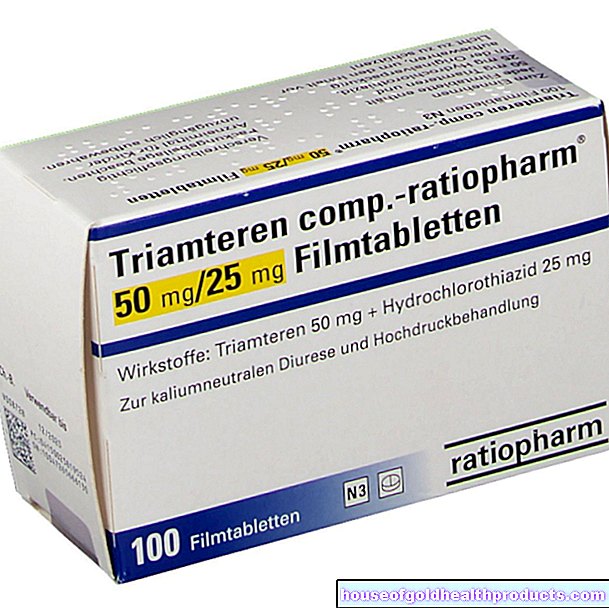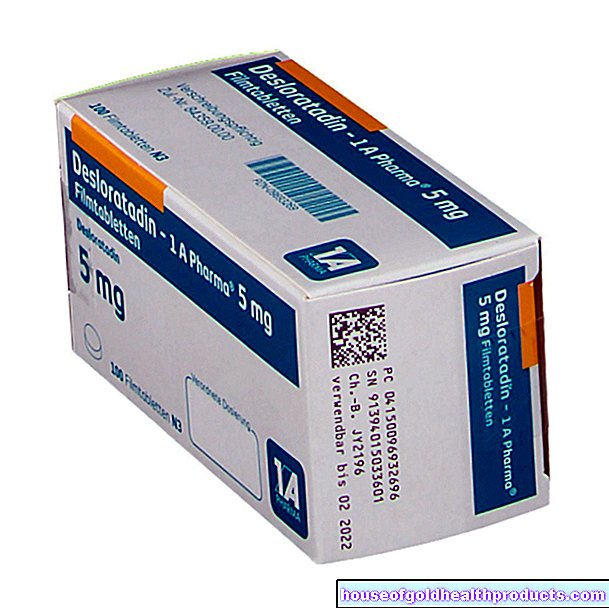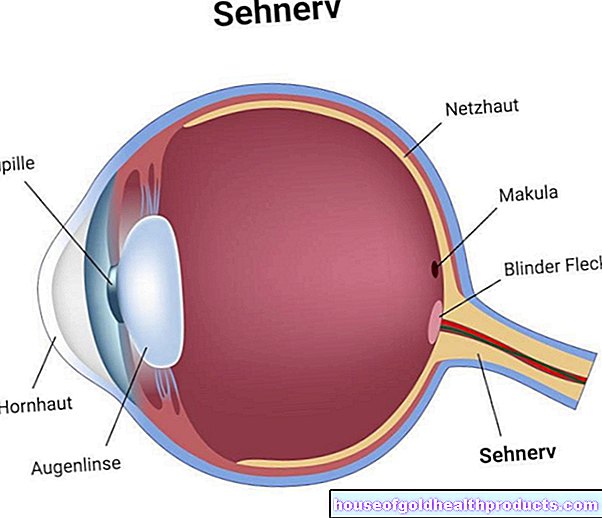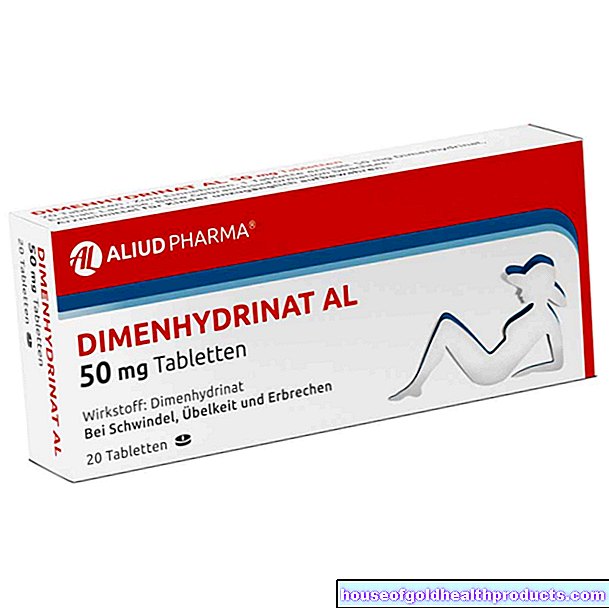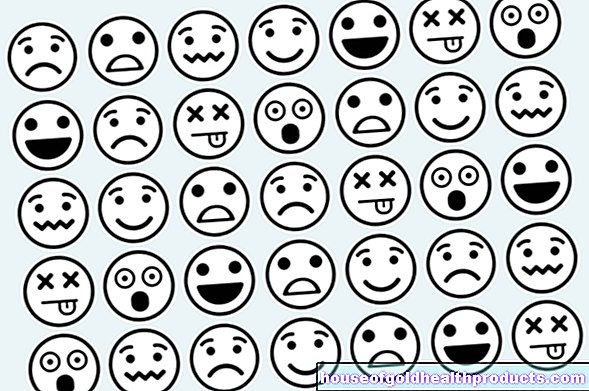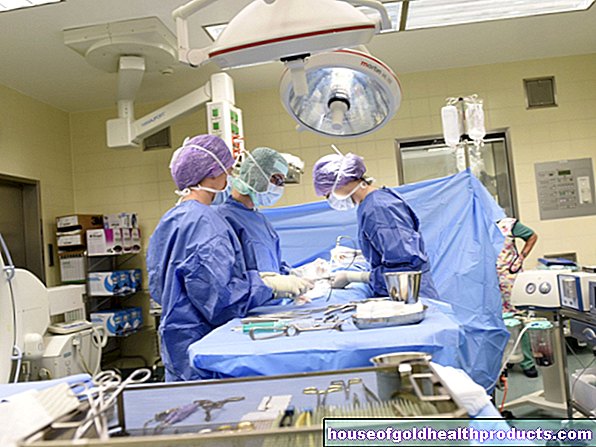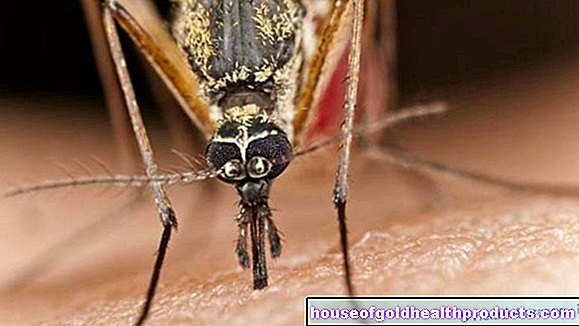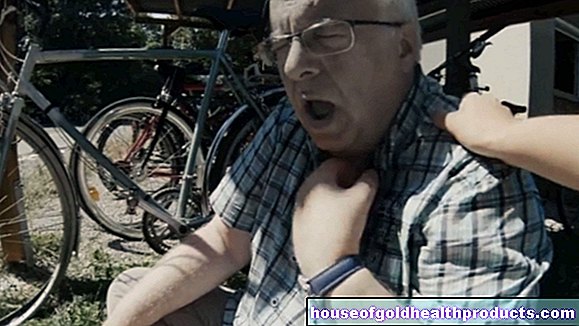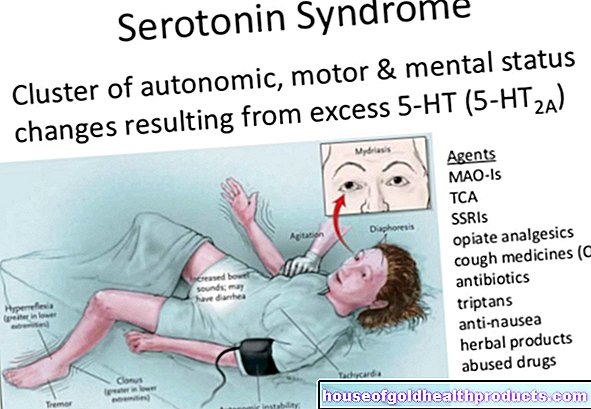Speech disorders and speech disorders
Language is the cornerstone of communication, which in turn is given an audible expression by speaking. In order for someone to be able to communicate easily in this way, both a strong understanding of the language and a clear ability to speak are important. However, both can be disturbed. Sometimes this affects the child's language development, sometimes language and speech disorders only appear much later. Read here what forms there are, what can be behind them and what can be done about them.
Language and Speech Disorders - What's the Difference?
Experts generally differentiate between speech disorders and speech disorders:
In the case of a language disorder, the mental formation of words and sentences, sometimes also the understanding of language, is disturbed. The cause is disorders in the language center of the brain. For example, those affected have difficulty finding the right words, forming meaningful sentences or understanding other people.
Speech disorder is a motor limitation that hinders articulation. The generation of sounds or the flow of speech are disturbed. Common examples are lisp and stutter. The intellectual formation of the language is not impaired.
Speech and speech disorders can occur individually, but also together. Both can also emerge as part of language acquisition in childhood. They are then referred to as language development disorders: a child's language ability lags significantly behind that of their peers.


How do language disorders manifest themselves?
There are different types of speech disorders and they manifest themselves differently depending on the cause. They can crystallize in childhood - for example due to a developmental disorder. Or they occur as a result of an illness in adulthood.
Disturbances of speech expression (expressive speech disorders)
Speech disorders can manifest themselves on the word level and on the grammatical level. Children’s ability to express themselves with language is below average.
One possibility is a vocabulary deficit due to intellectual limitations, developmental disorders or illness-related losses. Those affected then simply use generic terms (“the thing”) or wrong words, for example.
Dysgrammatism (agrammatism) manifests itself in incorrect sentence constructions or shortened two- or three-word sentences, such as those expressed by children in the early stages of language acquisition. Speaking in "telegram style" is also typical.

Disturbances in speech comprehension (receptive language disorder)
Children with receptive language disorder have difficulty understanding language. This can be developmental or it can be due to hearing loss. Since understanding language is the basis for language acquisition, the children usually also have an expressive language disorder - that is, they can also communicate poorly.
A receptive language disorder can also occur in the course of life due to neurological diseases or brain injuries.
Speech degradation and speech loss syndromes
There are a number of diseases that are associated with a loss of language skills that have already been acquired. These include above all strokes, but also brain injuries and inflammations or dementias.
aphasia
In aphasia, important language centers in the brain are damaged. In most cases, a stroke is the cause. Depending on the extent and the affected brain area, there are different forms of aphasia. Above all, this includes Broca's aphasia, in which those affected can no longer properly control their speech process. But also the Wernicke aphasia, which is associated with a disturbance of speech understanding.


Speech reduction in dementia
Dementia gradually affects all cognitive areas - including language and speaking. In the most common form, Alzheimer's dementia, word-finding disorders often occur early on. The sentence structure is also affected. As the disease progresses, the language often becomes empty of content. Patients repeatedly utter general phrases (“Yes, yes, that's it”). In the late phase of the disease, language and language understanding are severely damaged.
Heller's dementia (also infantile dementia, disintegrative psychosis) is a serious developmental disorder. Affected children, who previously developed normally, suddenly lose cognitive, motor and social skills - including language in particular - from the age of two to three years within months. Some courses are similar to autistic disorders. The causes are not clear.
Landau-Kleffner syndrome (aphasia-epilepsy syndrome) is a rare form of childhood epilepsy with aphasia. It occurs between the ages of five and seven and results in a loss of language skills. At the beginning the children have increasing difficulties understanding what is being said. The ability to speak declines later - sometimes to the point of complete silence.


Dysphasia
(Cognitive) dysphasia is a lighter language disorder. Speech skills and comprehension are reduced here, for example, due to a memory or attention disorder or limited cognitive abilities.
Overall, dysphasia is a term that has different meanings. Sometimes it stands for a mild form of aphasia or is equated with it. In places it also describes dysgrammatism or, in general, the state of backward language development.
Disturbances in the written language
Some language disorders are limited to writing and reading texts. In the combination one speaks of a disorder of the written language acquisition or reading and spelling weakness (dyslexia). Usually this is the result of a developmental disorder, but it can also occur later in life due to neurological disorders.
People who suffer from dyslexia have difficulty deciphering texts or even individual words. You read slowly, hesitantly and incorrectly. They often struggle to grasp the content of a text. The maximum form is alexia.
Dysgraphy refers to problems writing texts. It is difficult for those affected to internalize and implement spelling, grammar and punctuation. Even copying texts correctly is a challenge for some. If you cannot write anything despite motor skills, it is an agraphy.


How do you recognize speech disorders?
In the case of speech disorders, grammar and choice of words are inconspicuous. Instead, articulation disorders, disorders in the flow of speech or a disturbed speech melody occur.
Stuttering: The flow of speech is blocked in people who stutter. You overstretch words or “get stuck” and have to take several attempts to force a word out. This manifests itself in involuntary repetitions of sounds, syllables or words.
Articulation disorders (dyslalia): In the so-called "stammering" either the sound formation (phonetically) or the sound usage (phonological) is incorrect. There can also be a mixed form.
- Among the phonetic articulation disorders, lisp (sigmatism) is particularly widespread, in which the formation of sibilants "slips". This is a common phenomenon in childhood: the child misses the target sound (e.g. "" s "instead of" ch ":" Is hungry "). If the letter “r” is affected, one speaks of Rhotazism, of Cappazism with “k”.
- One speaks of phonological pronunciation disorders when those affected swap sounds or omit individual sounds (“Die Tirsche tastes good”). The sound itself, however, works without any problems. This is also common in childhood.
Rumble: Rumble describes a flow disorder in which the speakers speak very quickly and / or irregularly. The words merge. Syllables and sounds are left out. What is said is then difficult to understand.
Rhinolalia (sound formation) / rhinophonia (sound sound): "Nose" also falls under speech disorders. Experts differentiate between open and closed noses. When the nose is open, a lot of air flows through the nose, which has a particular effect on the formation of vowels (a, e, i, o, u) and explosive sounds (e.g. p, t, k). On the other hand, closed nasalizing changes the nasal sounds n and m in particular.
Dysarthria: Dysarthria occurs as a result of neurological disorders or injuries. This makes it difficult to move the tongue and soft palate. The tone of the voice, volume and speaking rhythm are then impaired. Dysarthria occur, for example, in stroke patients (hypotonic dysarthria, "slurred speech"). Parkinson's patients, on the other hand, often speak very quietly and monotonously (rigid-hypokinetic dysarthria).
Apraxia: Speech apraxia occurs after damage to the left side of the brain. The brain areas that are responsible for planning speech movements are then affected. Patients cannot speak clearly and intelligibly. Speech apraxia usually occurs together with aphasia.
Verbal developmental dyspraxia: Verbal developmental dyspraxia is a mostly severe language and speech disorder that is located in the motor language center. Affected children have great difficulty formulating sounds and words because they have problems with speech planning and coordination. This hinders the development of active vocabulary and grammatical skills. Those affected also find it difficult to understand others.



What are the causes of speech disorders?
Speech disorders have a variety of causes. They can emerge during language development in childhood or occur after language acquisition due to illnesses or injuries. Psychological and social factors can also impair the ability to speak.
Causes of Acquired Language Disorders
Examples of causes of acquired language disorders in adults include:
- stroke
- Brain injuries (e.g. traumatic brain injury after an accident)
- Cancer diseases of the brain
- Dementias (e.g. Alzheimer's disease)




Causes of Speech Disorders in Childhood
Speech disorders in childhood are mostly developmental. Among other things, they can have genetic roots. Language disorders in childhood are due, among other things, to:
- genetic factors associated with mental impairments (e.g. Down syndrome, William Beuren syndrome)
- Hearing disorders and auditory processing disorders that impair language acquisition
- insufficient oxygen supply during childbirth, which damages the language center in the brain
- early childhood autism
- neurological diseases such as strokes, brain tumors
- neurological injuries due to traumatic brain injury or surgery to the brain
- psychosocial factors (e.g. neglect)
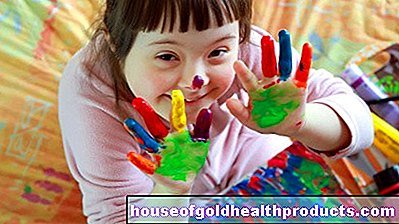

Stress as a cause of speech disorders
Psychological factors such as significant acute or chronic stress can also cause language disorders. When stressed, attention and ability to concentrate decrease. This can, for example, cause word-finding disorders or cause you to lose the thread in a sentence.
Fear, shock or trauma can silence those affected completely. This can only affect certain situations (selective mutism). Doctors speak of mutism here.
Note:
Sudden speech disturbances are always an alarm signal. Call an ambulance! The cause can be a stroke, for example. Then every minute counts!
Causes of Speech Disorders
The causes of speech disorders are also manifold. Some are congenital, others arise from illness or injury. Social and psychological factors can also cause speech disorders.
Causes in childhood
Disturbed speaking or impaired speech development in children can be attributed, among other things, to:
- Genetically caused malformations of the tongue, lips, tongue, jaw, palate, vocal folds that hinder the formation of sound (e.g. with a cleft lip and palate or trisomy-21).
- Brain damage in early childhood (e.g. lack of oxygen during childbirth). Impaired speech processing in the brain can then restrict the mobility of the lips and tongue.
- Hearing impairments or hearing loss during the time of language acquisition make it difficult to precisely differentiate sounds and to reproduce them accordingly.
- Incorrect jaw and tooth positions can impair the correct formation of sounds.
- Psychosocial causes (stress, traumatic experiences, unresolved feelings of fear, anger and sadness, strong pressure to perform, chronic underchallenge).


Neurological disease patterns / damage
Damage to central or peripheral nerves can cause speech disorders. This also applies if the brain region responsible for speech motor skills is abnormally changed. Important causes of speech disorders are:
- stroke
- Brain injuries
- Brain tumors
- Inflammation of the brain
- Parkinson's
- Chorea huntington
- multiple sclerosis
- Amyotrophic Lateral Sclerosis



This is how doctors diagnose language disorders
Children develop at very different speeds. This also applies to language acquisition. Therefore, language disorders are not easy to diagnose in childhood. Doctors usually record language problems in adults as part of a neurological examination.
Childhood examinations and tests
In order to determine the current level of development, paediatricians use various tests that measure the vocabulary and grammatical skills of the children. For example, the child names objects or is observed in conversation with the parents.
Hearing tests and newborn screening: If there are indications that a child is clearly lagging behind its peers in terms of language, a hearing test is used to check whether poor hearing is the reason for the delay in development. Because if you don't hear language well, you can't learn it properly. For this reason, every child is entitled to a newborn hearing screening.
Organic brain examinations: Further examinations that reveal possible pathological causes for the speech disorder can follow. This includes, for example, imaging procedures such as magnetic resonance imaging (MRT) or CT (computed tomography). Doctors may also use electroencephalography (EEG), which measures brain waves.



Examinations and tests in adults
Speech disorders that occur after language development has been completed are of pathological origin. The first thing to do here is to uncover the cause and provide the best possible care - for example, a stroke, dementia or tumor disease.
Neurological examinations are used for this. Depending on the initial suspicion, there are also EEG (electroencephalography), MRT (magnetic resonance imaging) or CT (computed tomography).
There are also various specialized tests for assessing and classifying the type and extent of the language disorder.
One example is the Aachen Aphasia Test (AAT). With the help of a standardized interview, a doctor or speech therapist checks the patient's spontaneous speech. The examiner then asks the patient to repeat words and sentences and to name objects and situations. Speech comprehension is tested by assigning drawings to sentences and words that have been read aloud.
Note:
Speech disorders are a symptom that must always be taken seriously - regardless of whether they appear suddenly or creep in. They can be a symptom of a serious illness and should therefore be examined by a doctor.
This is how the doctor assesses speech disorders
Speech disorders are very common in younger children and often outgrow. But if they are very noticeable, if they persist or if they are stressful for the child, it is best to consult your pediatrician. In adults, the underlying disease is often a neurological one that also requires medical clarification.
Basically, the doctor tries to find out what could be the cause of the speech disorder. In addition, he conducts a detailed conversation about the previous and medical history (anamnesis). Then he gradually rules out possible causes.
As with speech disorders, he also uses neurological tests and examinations with EEG (electroencephalography), MRI (magnetic resonance tomography) or CT (computer tomography).
Usually several doctors and specialists are involved in a diagnosis. ENT doctors, for example, assess your hearing. Dentists and oral surgeons, on the other hand, examine misalignments of the jaws and teeth.
Regardless of whether the cause can be found, tests follow to determine the form and extent of the speech disorder. The subsequent speech therapy plan builds on this.


Speech disorders: therapy
If the speech disorder is due to a disease, it must first be treated, for example with medication or an operation. This sometimes also improves the language problems.
Speech therapy training
Often, however, this is not enough, for example because the disease has already left permanent damage. Then an individual speech therapy training is the most important measure.
The aim is to improve linguistic and communicative skills and thus enable the patient to participate more in social life again. The two basic strategies are:
- To restore the lost skills as much as possible or to build up skills that were not acquired
- Where that is not possible to compensate for the disturbance
For this purpose, the speech therapist develops an individually tailored exercise plan. Role plays, for example, in which patients practice speaking in everyday situations, are an important component.
The relatives are also part of the speech therapy treatment. They learn what to consider when dealing with the patient. This includes, among other things, speaking in simple sentences yourself or not taking over speaking for the patient if the patient does not want to.
Note:
It is important for children that speech therapy support is provided as early as possible during language acquisition. The distance to the peers, also with regard to other development and learning content that depends on speaking, is otherwise increasingly difficult to catch up.

Speech disorders: therapy
If a treatable disease is the cause of a speech disorder, therapy is the first priority. This can also improve the speech disorder. If it still persists to a disruptive extent, speech therapy treatment is the most important measure. This includes:
- Speech motor skills training
- Training of listening attention
- Exercises for more precise sound formation and differentiation of sounds
- Strategies to improve the flow of speech: (e.g. reduced speaking speed, special breathing or speaking techniques)
Computer-aided biofeedback training can meaningfully support many of the training contents mentioned. The person concerned can use appropriate visualizations on the computer screen, for example, to check how cleanly they have pronounced a certain word or whether they have correctly identified sounds.
If psychological stress has caused or exacerbated the speech disorder, additional psychotherapy is important.
Note:
Speech disorders can limit the children's psychosocial development. Therefore, speech therapy should start as early as possible in childhood.


Mental consequences of language and speech disorders
Communication is a central aspect of human existence. Anyone who has difficulty communicating or understanding others is cut off from social participation. Learning and information is also made more difficult.
Moreover, even minor language and speech disorders can make you deeply insecure and lonely. Anyone who speaks badly or indistinctly is quickly marginalized or bullied. School and professional opportunities are also limited. This hits children hard in their general development.
Adults who lose their language skills often despair and withdraw from social life. Mental disorders can be the result. It is all the more important to provide the best possible medical, logopaedic and psychiatric or psychotherapeutic care for language and speech disorders.


